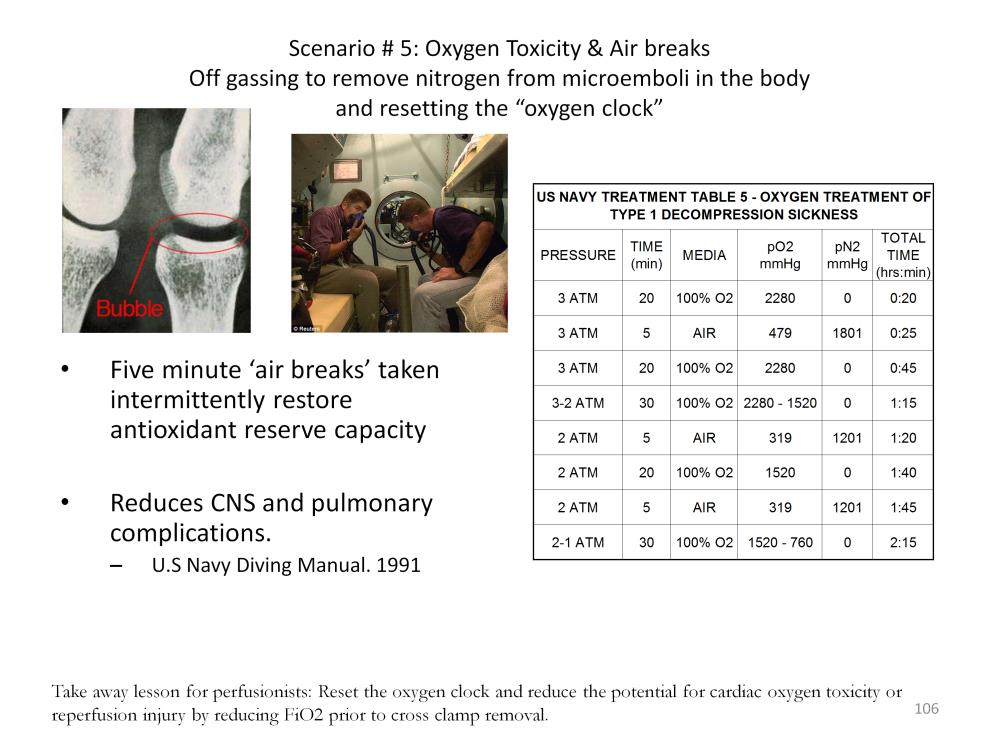
The toxic effects of high oxygen concentration can be prevented by taking ‘air breaks’. Air breaks help the antioxidants ‘catch up’ in a high oxygen system. For example, during recompression/decompression treatment for decompression sickness (the bends), divers breath pure oxygen for 20 minutes followed by breathing room air for 5 minutes beginning at 3 atmospheres of pressure. The pO2 of pure oxygen at 3 atmospheres is 2280 mmHg. After breathing pure oxygen for 20 minutes, the diver breaths only room air for 5 minutes, which at this pressure has a pO2 of 479. Nonetheless this is enough to restore antioxidant activity to normal. By breathing pure oxygen, the dissolved nitrogen is more rapidly removed from the body as decompression proceeds in stages. Without the use of pure oxygen during decompression, the treatment would take more than 10 times as long to remove the nitrogen from the tissues and blood.
Perfusionists who are concerned with the potential for oxygen toxicity can perform a similar strategy to reduce the number of nitrogen bubbles going into the patient or remove any nitrogen bubbles already in a patient; operating the sweep gas FiO2 at 100% for 20 minutes, followed by an FiO2 of 50% or less for 5 minutes to reset the oxygen clock. An FiO2 of 50% (pO2 = 380 mmHg) is thought to be a safe oxygen level in mammals, without the risk of accumulating oxygen tolerance units and overwhelming the function of the antioxidants. Air breaks can be utilized at specific procedural points such as when the aortic cross clamp is removed or when reperfusion begins after deep hypothermic arrest.

Perfusion Theory is an educational platform for the Oxygen Pressure Field Theory (OPFT). August Krogh’s theoretical concept of the oxygen pressure field is explained and then applied to clinical applications in perfusion practice.